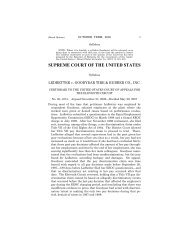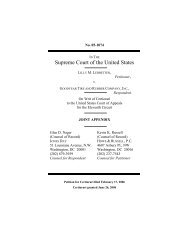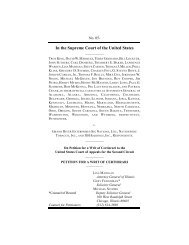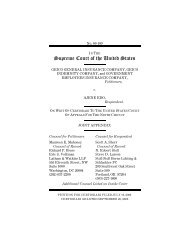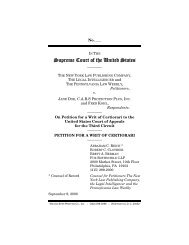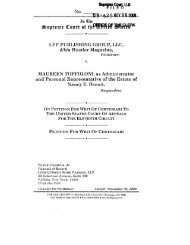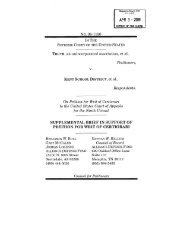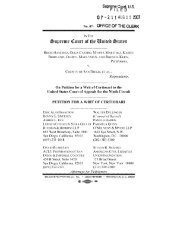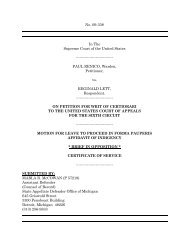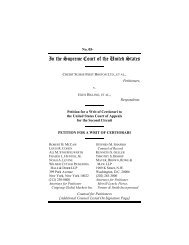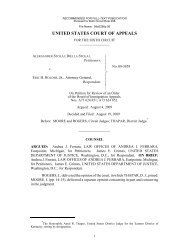PETITION FOR A WRIT OF CERTIORARI - SCOTUSblog
PETITION FOR A WRIT OF CERTIORARI - SCOTUSblog
PETITION FOR A WRIT OF CERTIORARI - SCOTUSblog
Create successful ePaper yourself
Turn your PDF publications into a flip-book with our unique Google optimized e-Paper software.
REASON <strong>FOR</strong> GRANTING THE <strong>PETITION</strong><br />
I.<br />
THE COURT SHOULD GRANT THE <strong>WRIT</strong> TO DECIDE<br />
WHETHER A STATE COURT MUST APPLY THE TEAGUE<br />
STANDARD WHEN DETERMINING THE RETROACTIVE<br />
EFFECT <strong>OF</strong> UNITED STATES SUPREME COURT DECISIONS,<br />
OR WHETHER STATE COURTS MAY USE A BROADER<br />
STANDARD <strong>FOR</strong> RETROACTIVE APPLICATION.<br />
Deepening a split of authority in the state courts, the Minnesota Supreme Court<br />
held that it was absolutely prohibited from applying any test for retroactive application of<br />
new rules of federal constitutional criminal procedure other than the test announced in<br />
Teague v. Lane, 489 U.S. 288, 310 (1989). This Court should grant certiorari in this case<br />
because this important issue, a question of federal law, is subject to an intractable split of<br />
authority in the lower courts and it has not been, but should be, resolved by this Court.<br />
U.S. Sup. Ct. Rule 10.<br />
A. The Teague Standard Is Based on Principles Unique to State Cases<br />
Being Considered Under Federal Habeas Corpus Review.<br />
In Teague v. Lane and subsequent decisions, this Court announced and applied a<br />
test for determining whether the holding of one of this Court’s cases could be applied<br />
retroactively to cases pending on federal habeas corpus review. This Court recently<br />
summarized the test as follows:<br />
Under Teague, the determination whether a constitutional rule of criminal<br />
procedure applies to a case on collateral review involves a three-step<br />
process. First, the court must determine when the defendant's conviction<br />
became final. Second, it must ascertain the legal landscape as it then<br />
existed, and ask whether the Constitution, as interpreted by the precedent<br />
then existing, compels the rule. That is, the court must decide whether the<br />
rule is actually new. Finally, if the rule is new, the court must consider<br />
whether it falls within either of the two exceptions to nonretroactivity.<br />
6



